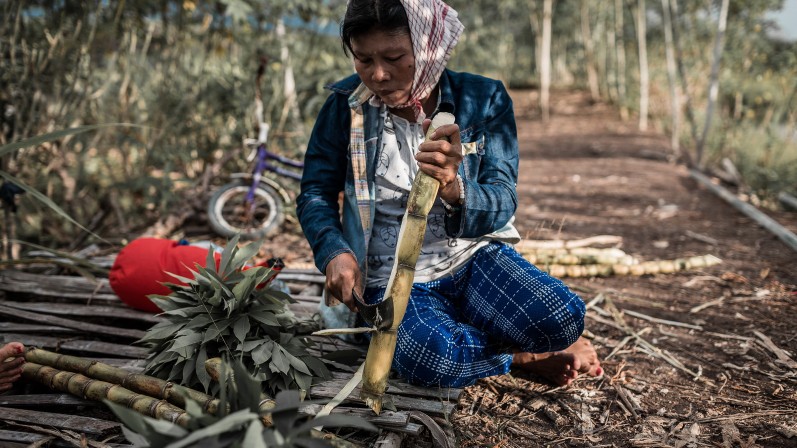2021: Flood and Drought. A Critical Study of South Kalimantan's Environmental Emergency
By Kisworo Dwi CahyonoThe Impact of Ecosystem Restoration on Villagers’ Income
Forest and land make up 30% of the Earth’s surface, providing elements critical to human survival, such as food, cattle, water, housing, nutrition, as well as space for culture and recreation. Forests also store a lot of carbon and provide habitats for flora and fauna.
Land and forest degradation is an environmental change caused by human activity, which impacts agricultural productivity, environmental welfare, and food security.
To date, it is estimated that 40% of the world’s farmland has been degraded. Income from forests accounts for approximately 22% of the total income of 8,000 households in 24 developing countries.
The United Nations Framework Convention on Climate Change (UNFCCC), the United Nations Convention on Biological Diversity (CBD), and United Nations Convention to Combat Desertification (UNCCD) agreed in the Rio Conventions that forest income contributes to synergistic achievement in the forestry sector.
Environmental resources are crucial to livelihoods, consumption, and commerce. Ecosystem restoration supports community welfare. Deforestation and land degradation are significant threats not only to ecosystems, but also the welfare of communities that depend on the forest.
Peatland is a forest area with significant potential to contribute to prosperous communities. Peat ecosystems play a crucial part in climate changes, because they store one-third of the world’s carbon stock. Indonesia alone has 14.9 million hectares of peat forest, which store approximately 22.5-43.5 gigatons of carbon. Unfortunately, this tremendous potential is limited by the conversion of peatland into plantations and infrastructure development sites without measuring potential impacts on the surrounding ecosystem.
The 2015 fire—which burned two million hectares of Indonesian forests and land, more than half of which was peatland—is the largest ecological catastrophe in the country’s recent history. The fire resulted in an economic loss of 221 trillion rupiah (US$16 million) and reduced economic growth by 0.5%.
This triggered the Indonesian government to issue Presidential Regulation No. 1/2016 regarding the Peatland Restoration Agency (BRG). If implemented in accordance with the agreed-upon commitment, peatland restoration would solve the prolonged crisis caused by the fire. It would ensure the preservation of the natural ecosystem and guarantee the welfare of impacted communities.
The forest restoration permit issued by the Indonesian government allows holders to manage and earn forest income through sustainable harvesting, ecosystem service, ecotourism, and other nonexploitative labor. Concession holders are also responsible for supporting the livelihoods of indigenous communities living in the concession area.
As an example, the NGO Burung Indonesia established PT Restorasi Ekosistem Indonesia (Reki), which manages the Harapan forest in Jambi and South Sumatra. This lowland wood forest is inhabited by more than 307 bird species, 64 mammal species, 123 fish species, 55 amphibian species, 71 reptile species, and 728 tree species.
The Harapan forest was built around an ecosystem-based forest management model, not as a commodity. It is surrounded by three palm oil plantations and inhabited by the Batin Sembilan indigenous community. This community is nomadic and has local wisdom regarding forest management. This local wisdom has enabled 300 Batin Sembilan families to survive until now.
On average, the Batin Sembilan indigenous community group earns more income from forest resources (36%) than the local Malay and immigrant communities, who earn only 10% and 8% of their income from the forest, respectively. The products these communities harvest from the Harapan forest are their second primary source of income, constituting 29% of their annual net income.
In the 1970s, wood concessions covered all forest areas in Jambi. In the 1980s, regional policy converted the land by allowing plantations to be developed and implementing a transmigration scheme and palm oil cultivation program for Javanese migrants. The resulting population growth made the two hectares of land that the government allocated to each migrant household inadequate to maintain their livelihood. As this shows, the government should recognize indigenous ways of managing land. The government should not issue permits to companies to convert existing land or conduct programs that adversely affect land conditions.
Forest management that prioritizes the ecosystem and local wisdom can increase community incomes even more than commodity-based forest management. Let us help increase the income of communities living in peatlands by monitoring the government's commitment to restoring the peatland!




